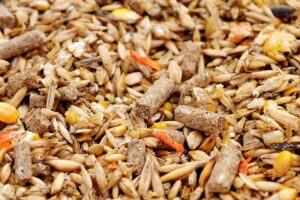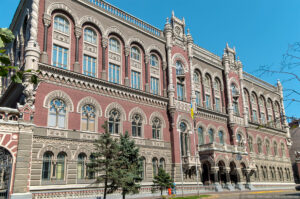
The State Property Fund (SPF) of Ukraine has put up for auction in the Prozorro.Prozori system 100% of the state-owned shares of JSC “Radiorele Plant” (Kharkiv) at a starting price of UAH 234.4 million, which is twice the price at the repeat auction in February this year, which did not take place.
According to the SPF, the online auction is scheduled for October 28.
The property includes 5 units of real estate (non-residential buildings, warehouses, workshops, etc.) with a total area of 49.14 thousand square meters, 12 units of vehicles and special equipment manufactured between 1983 and 2013, one of which has been transferred to the Armed Forces of Ukraine.
The company’s balance sheet also includes 3.51 thousand items of equipment, furniture, inventory, 114 items of technical literature, and 41 intangible assets.
In addition, as of September 15, 2025, part of the real estate with a total area of 479.4 square meters has been leased.
According to the terms of the tender, the buyer of JSC “Radio Relay Plant” is obliged to pay off debts on wages and to the budget within six months from the date of transfer of ownership, as well as to prevent the dismissal of employees (as of June 30, 2025, 57 people worked at the plant).
The plant’s main product range consists of low-current, miniature electromagnetic relays.
According to information from the State Property Fund, as of June 30, 2025, overdue accounts payable amounted to UAH 2.512 million, including UAH 1.28 million in wages, UAH 0.14 million in insurance, and no wages.
In January-June 2025, the plant incurred losses of UAH 5.7 million (UAH 10.3 million for the whole of 2024) and net income of UAH 2.3 million (UAH 5.2 million). The average monthly salary was UAH 10,900 (UAH 10,200).
The plant’s sales volume for the period from 2022 to the first six months of 2025 amounted to UAH 23.1 million, including exports of UAH 6.8 million.
As reported, in early February 2025, the State Property Fund of Ukraine put up for auction the state-owned stake in JSC Radio Relay Plant, but after it failed to take place due to the absence of participants, the price was halved at a repeat auction to UAH 117.2 million, which also failed to take place.

Investment company EFI Group, founded by Igor Lisky, together with its partners, has announced the start of construction of the Feednova Center (Feednova TM) plant for the production of high-protein feed additives and animal fats in the Cherkasy region.
“Despite the war, Ukrainian businesses are investing EUR 14.4 million in the first phase of the project. Total investments are planned to exceed EUR 20 million,” according to a press release on Tuesday.
According to the release, the majority investor is EFI Group, together with its strategic partner, leading Dutch and Danish manufacturers of technology and equipment in the processing industry.
The enterprise will include four production lines that will allow processing more than 150 tons of raw materials per day and producing more than 50 tons of finished products: meat and bone meal, feather meal, blood meal, and animal fats. The plant is scheduled to launch in the third quarter of 2026.
According to Samvel Ramazyan, director of Fidnova Center LLC, the design of the plant has already been completed and a general contractor has been selected, whose name is not disclosed in the release.
The Ministry of Economy, Environment, and Agriculture said in a press release on Tuesday that Fidnova Center will be the first project in Ukraine to receive compensation for the cost of constructed engineering and transport infrastructure facilities as early as 2025, with the total amount of state support estimated at UAH 172.1 million.
To date, the Ministry of Economy has provided the investor with a conclusion on the feasibility of the project, and the order to sign an agreement between the state and the investor is currently being approved by the central executive authorities. An agreement between the investor and the state will be signed in the near future, the ministry said.
The new facility will be the second plant under the Feednova brand after the successful launch of the first plant in the Lviv region in 2021, according to the release. The company exports more than 80% of its products to EU countries and continues its own development through the introduction of new production lines and the implementation of energy efficiency projects.
“The second plant for the production of high-protein additives is critically important for the modern meat processing industry. We are creating an infrastructure for efficient processing that simultaneously reduces environmental risks, creates jobs, and generates added value within the country. The Cherkasy region is the ideal location for this plant: it has strong agricultural enterprises, logistics, and, most importantly, the support of the local community,” Liska said in the release.
It is noted that the enterprise will create more than 80 jobs in the community and should influence the development of agro-industrial complexes in the region, as it will be the first in the central part of the country to process raw materials from external suppliers.

The Starship will be the first to fly to the moon, and China will not win the moon race, said Elon Musk, founder of SpaceX.
SpaceX is “moving at lightning speed compared to the rest of the space industry,” he wrote on social media. According to Musk, Starship will be the first spacecraft to complete a full lunar mission.
The spacecraft is scheduled to land humans on the moon as part of NASA’s Artemis program in 2027. Musk wants to certify Starship for human flights as early as next year. China plans to make a manned landing on the moon in 2030.
SpaceX’s reusable rocket system consists of the Starship spacecraft and the Super Heavy launch vehicle. It is over 120 meters tall. It is taller than any other rocket ever built in the world. The Super Heavy launch vehicle is twice as powerful as NASA’s Space Launch System (SLS) heavy rocket, which is being developed for manned flights to the Moon.
The rocket has already been launched on 11 test orbital flights, five of which ended in failure.

Last week, the National Bank of Ukraine (NBU) reduced its sale of dollars on the interbank market by $131.6 million, or 17.9%, to $602.7 million, while the weakening of the hryvnia slowed to 12.8 kopecks from 37.4 kopecks a week earlier.
According to information from the National Bank, during the first four days of last week, the average daily negative balance of currency purchases and sales by legal entities increased to $74.2 million from $36.6 million during the same period a week earlier, totaling $297 million.
At the same time, on the cash market, on the contrary, there was a decrease in currency purchases by the population: from Saturday to Thursday, the negative balance amounted to $21.3 million against $29.6 million the week before last. The purchase of non-cash currency exceeded its sale during all these days.
The official hryvnia-dollar exchange rate, which started last week at 41.6027 UAH/$1, weakened to 41.7607 UAH/$1 over three days but ended the week at the same level.
On the cash market, the dollar exchange rate over the past week fluctuated around the official rate of 41.7565 UAH/$1, and the hryvnia weakened by about 25 kopecks to the following levels: purchase – about 41.70 UAH/$1, and sale – about 41.80 UAH/$1.
At the end of last week, Bloomberg reported pressure from the International Monetary Fund to increase the pace of hryvnia devaluation, but there is no information on the impact of this factor yet, except that on the first trading day of this week, the hryvnia fell slightly to 41.7624 UAH/$1.
“The Ukrainian currency market continues to be influenced by the National Bank of Ukraine’s strategy of controlled flexibility… Since the beginning of October, the hryvnia has been gradually weakening against the dollar. The exchange rate on the cash market is changing at a similar pace,” experts from KYT Group, a major player in the cash currency exchange market, described the situation.
They added that there has been a noticeable increase in demand on the interbank market in October, and the NBU has been forced to increase its interventions. According to experts, this trend is seasonal on the one hand, as companies’ need for currency to make payments increases in the fall, and on the other hand, an additional factor affecting the hryvnia was the intensification of shelling of Ukraine’s energy and gas infrastructure, which led to an increase in imports of gas and energy equipment.
“In the short term (1–1.5 weeks): the base range is 41.4–41.9 UAH/$1, with a probable tendency toward the upper limit of the forecast,” according to the forecast for the cash market provided by KYT Group.
In the medium term (2–3 months), according to its experts, the exchange rate will be in the range of 41.30–42.00 UAH/$1. They believe that if the Fed goes ahead with an October rate cut and the risks of a trade war between the US and China weaken, the fundamental movement of the dollar on the international market may strengthen, which will also affect the exchange rate in Ukraine. However, the domestic Ukrainian context of expectations of continued large-scale shelling of infrastructure and a deterioration in the energy sector, as well as the high demand for growth in import volumes, may contribute to a more rapid strengthening of the dollar on the Ukrainian currency market.
“In the long term (6+ months): the scenario of a gradual devaluation of the hryvnia remains. Provided that international aid continues to flow in at a steady pace, the benchmark is 43.20-44.40 UAH/USD until mid-2026, taking into account the current situation in Ukraine,” according to a comment by KYT Group.
Source: https://bank.gov.ua/ua/markets
https://interfax.com.ua/news/projects/1113033.html

In September 2025, the number of service station partners of Express Insurance (Kyiv) grew by two more stations, reaching 138 across Ukraine.
According to information on the company’s website, service stations located in the Odesa and Cherkasy regions have joined the network of companies.
In total, during 2024-2025, the number of the company’s partner service stations increased by 80 stations.
The development of the partner network is part of Express Insurance’s strategic course to provide services and fulfill obligations in accordance with the new Law on Compulsory Civil Liability Insurance, which came into force on January 1, 2025.
Express Insurance was founded in 2008 and is part of the UkrAVTO group of companies. It specializes in auto insurance. The consistently high speed of claims settlement at the insurance company is ensured by optimal interaction with partner service stations.
Since April 2012, Express Insurance has been an associate member of the Motor Transport Insurance Bureau of Ukraine.